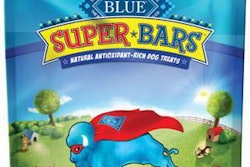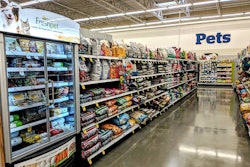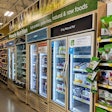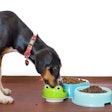
Blue Buffalo executives may steer the pet food brand’s product mix towards wet pet foods and treats as the company further expands in the food, drug and mass market (FDM) retail channel. Billy Bishop, president of General Mills’ pet segment, discussed this plan and other aspects of Blue Buffalo’s business at the Consumer Analysts Group of New York Conference.
In August 2017, Blue Buffalo began selling in four FDM retailers: Target, Kroger, Publix and Meijer. General Mills purchased Blue Buffalo in February 2018.
“Blue is now the number one pet food brand at Target,” Bishop said.
By the end of this fiscal year, Blue Buffalo plans to double FDM distribution. Meanwhile, the company is introducing new products into the FDM channel.
The mix of new Blue Buffalo products appearing on mass market retail shelves may shift towards wet pet foods and treats, which have a higher profit margin, he said.
Blue Buffalo pet food and treat sales
Blue Buffalo’s sales of pet food and treats grew more rapidly than dry pet food sales in the 52 weeks leading up to October 2018, according to Bishop. Currently, wet pet foods make up 15 percent of Blue Buffalo’s net sales. Pet treats account for six percent, while dry pet foods hold the largest percentage of net sales at 79 percent.
However, both wet pet food and treats experienced double-digit percentage growth in net sales compared to last year. Meanwhile, dry pet food sales increased by low single digits as a percentage of last year’s performance.
Blue Buffalo wet pet food and treat product mix
As a percent of retail sales, Blue Buffalo’s dry pet foods make up 79 percent of the brand’s pet specialty sales, with wet diets making up the other 21 percent, according to Bishop. In FDM, dry accounts for 62 percent while wet pet food and treats make up 38 percent of Blue Buffalo retail sales.
Compare those numbers to the overall market, where wet pet food and treats are 45 percent of retail sales and dry pet food sales equal 55 percent, according to Nielsen data presented by Bishop. Shifting Blue Buffalo’s product mix towards parity with the overall market’s retail sales make-up may allow the company to take advantage of the higher profit margins of wet food and treats.
“As we shift to FDM, we expect our mix to shift to a more profitable concentration of wet foods and treats,” he said.
Blue Buffalo plans for fiscal year 2019 and beyond
Blue Buffalo remains on track to deliver double-digit top and bottom line growth in fiscal year 2019, according to Bishop. Beyond this fiscal year, the brand plans to continue expansion both in the United States and in select destinations internationally.


















